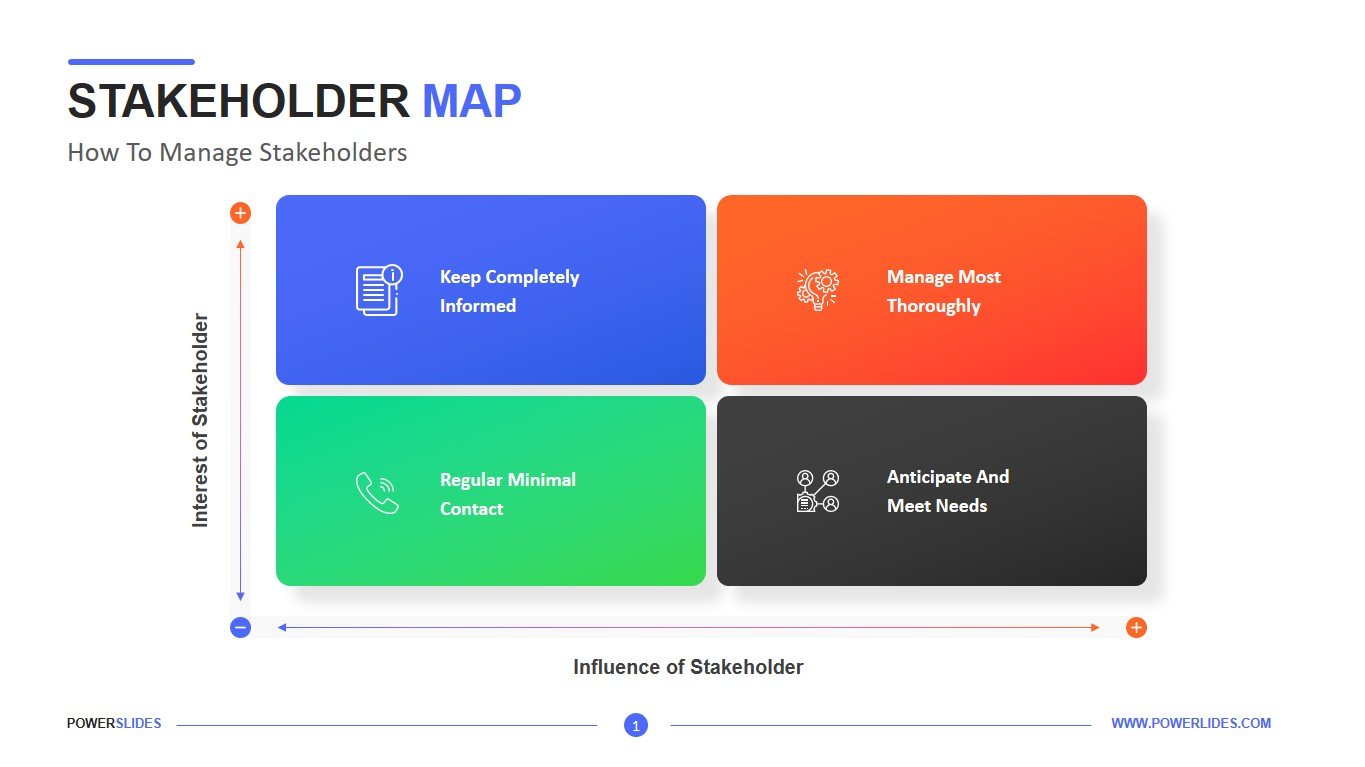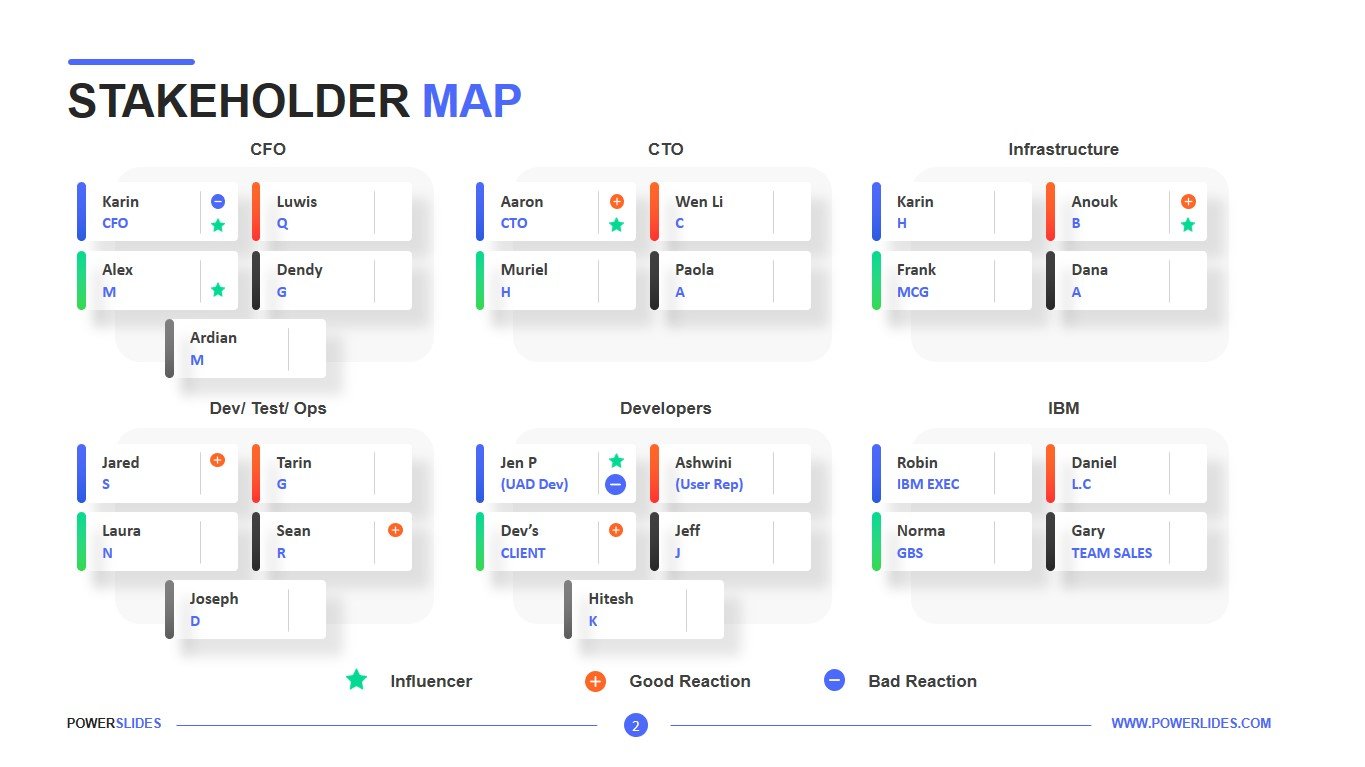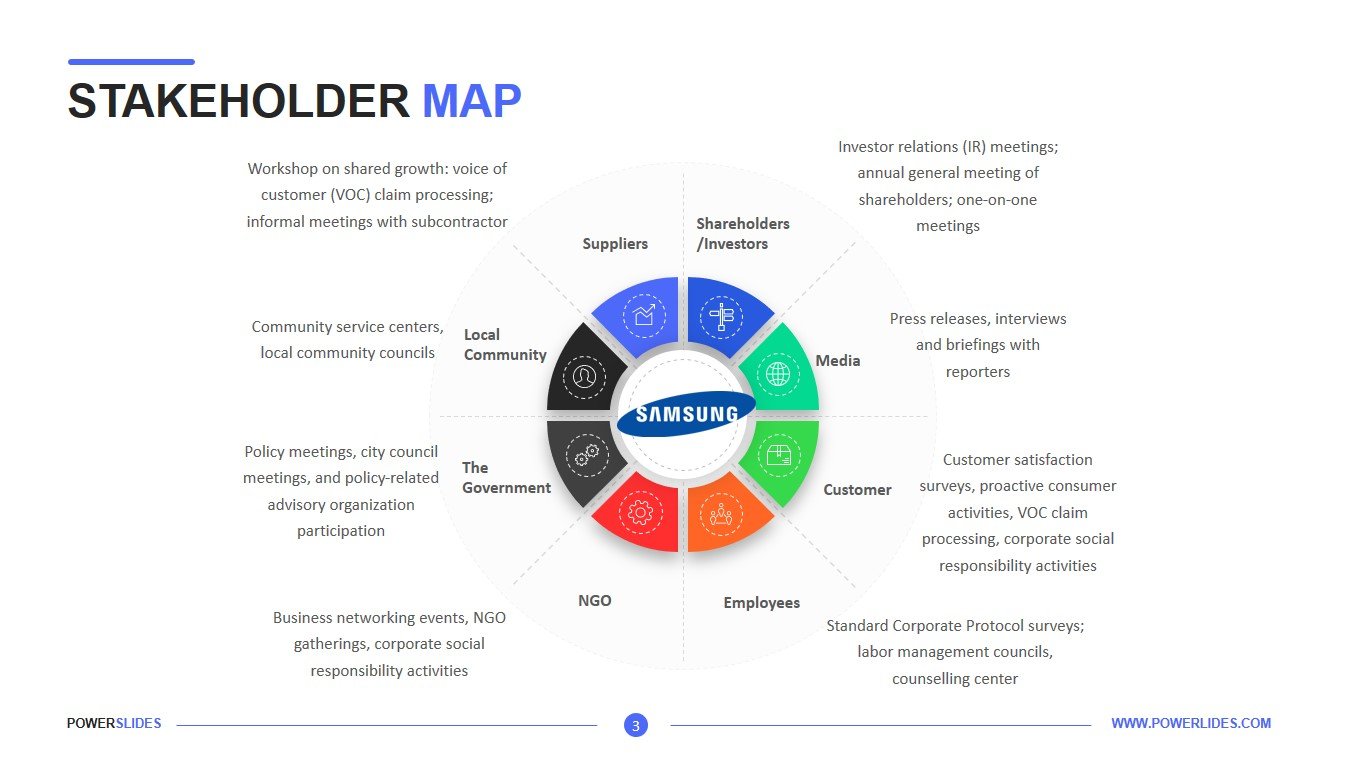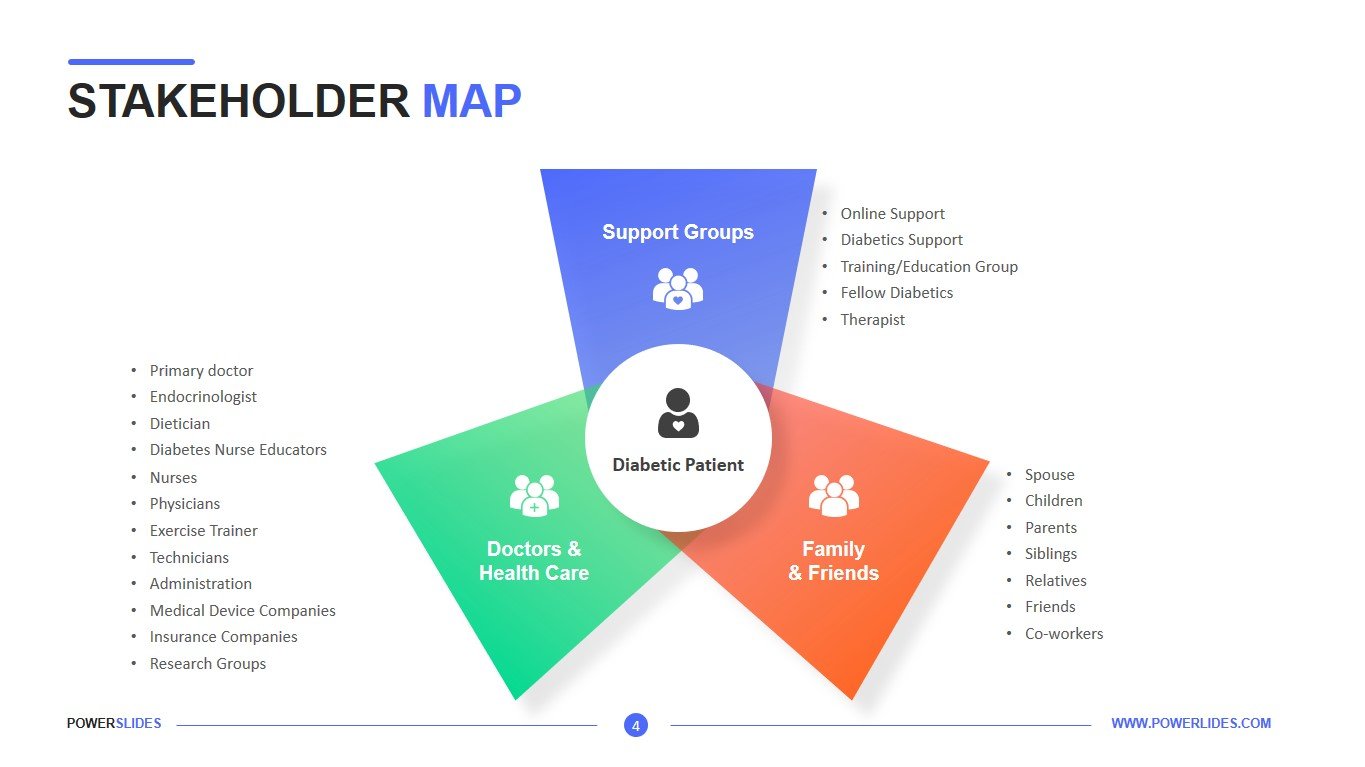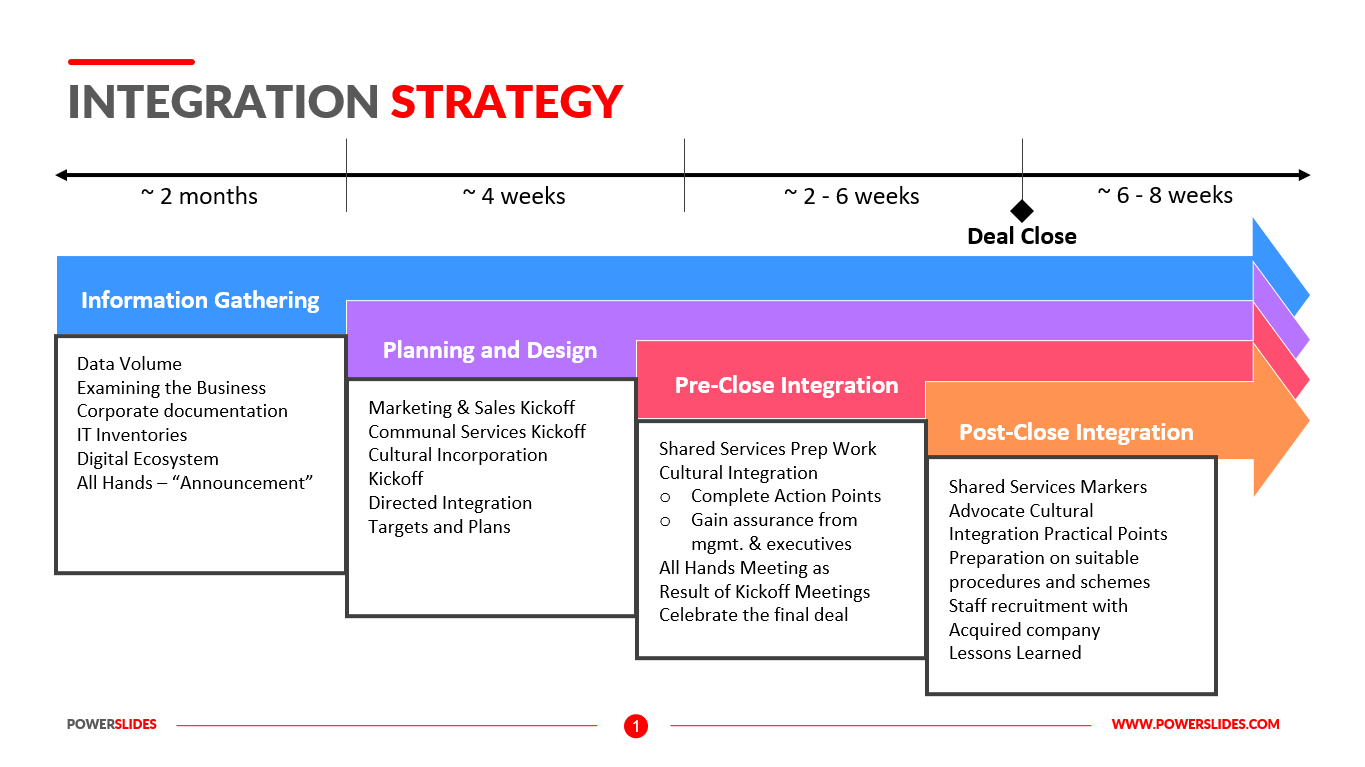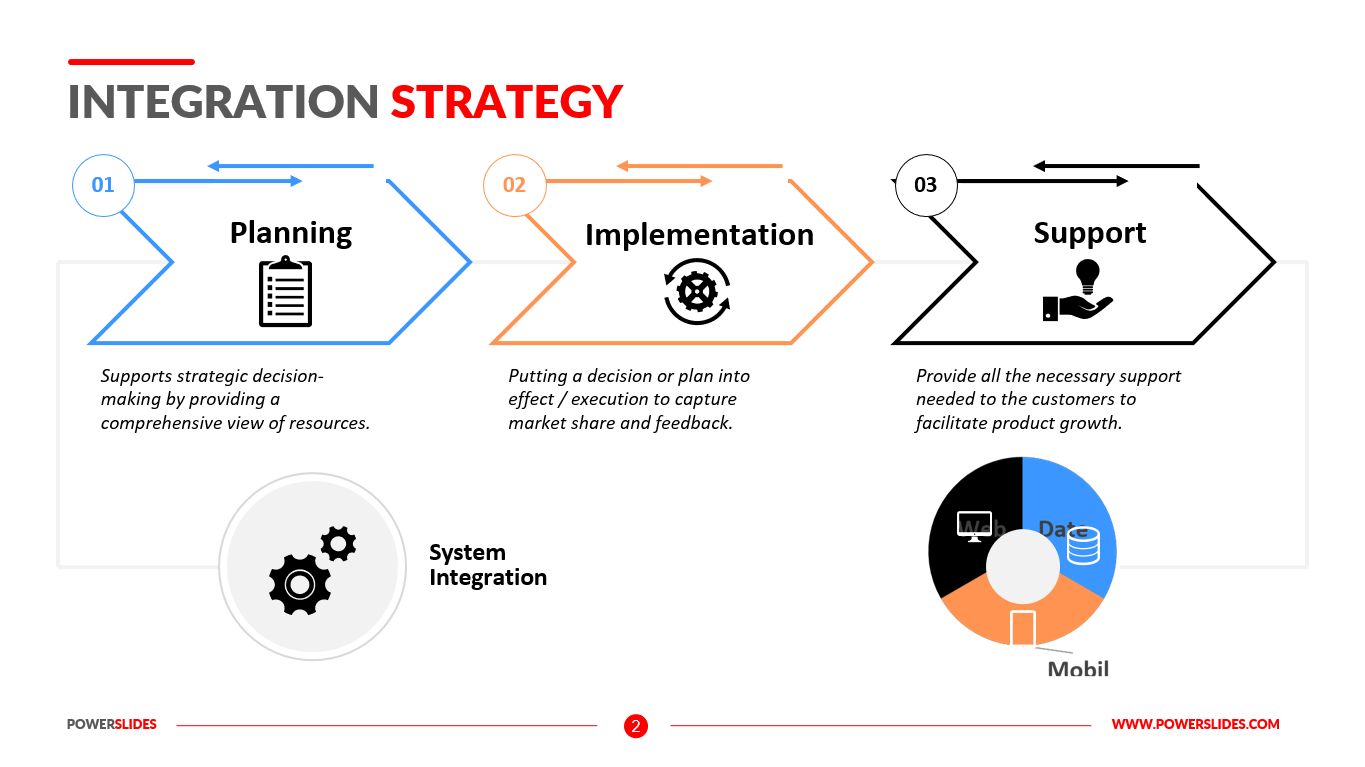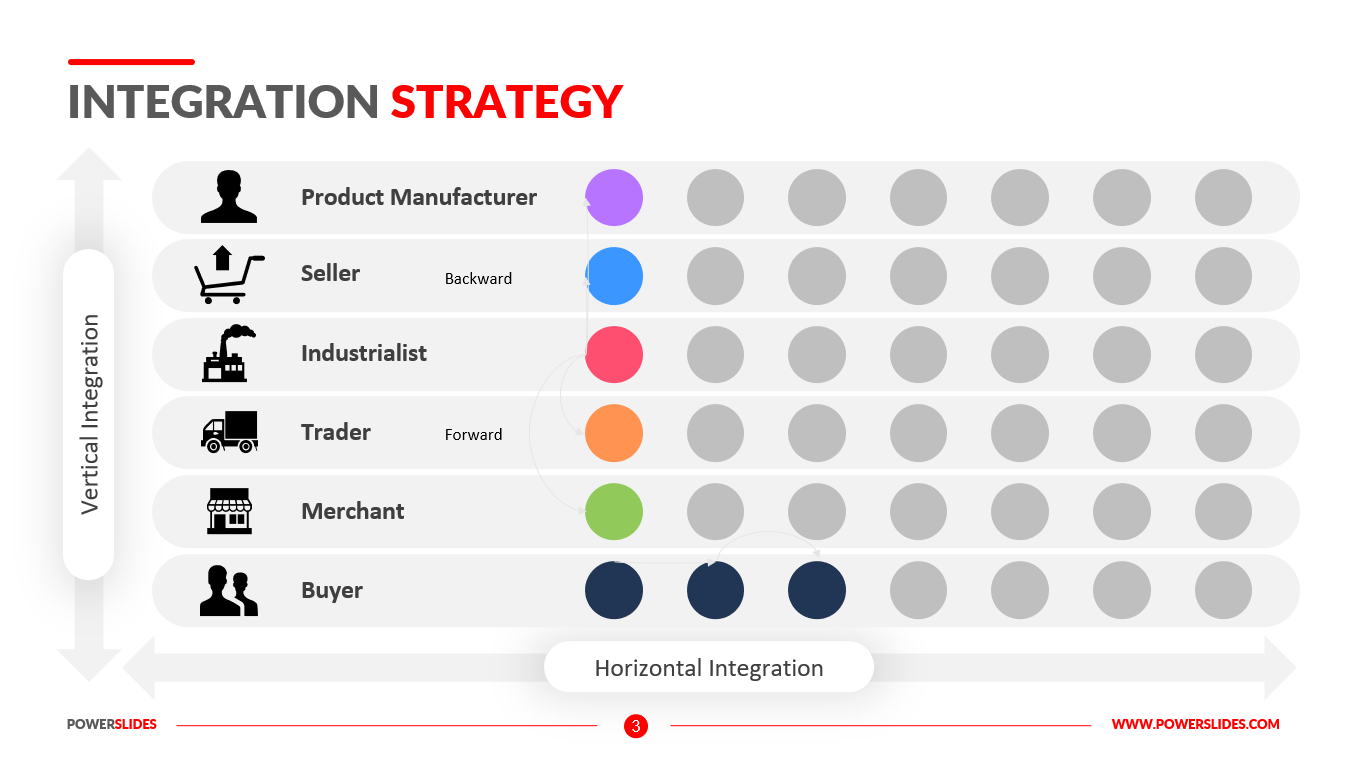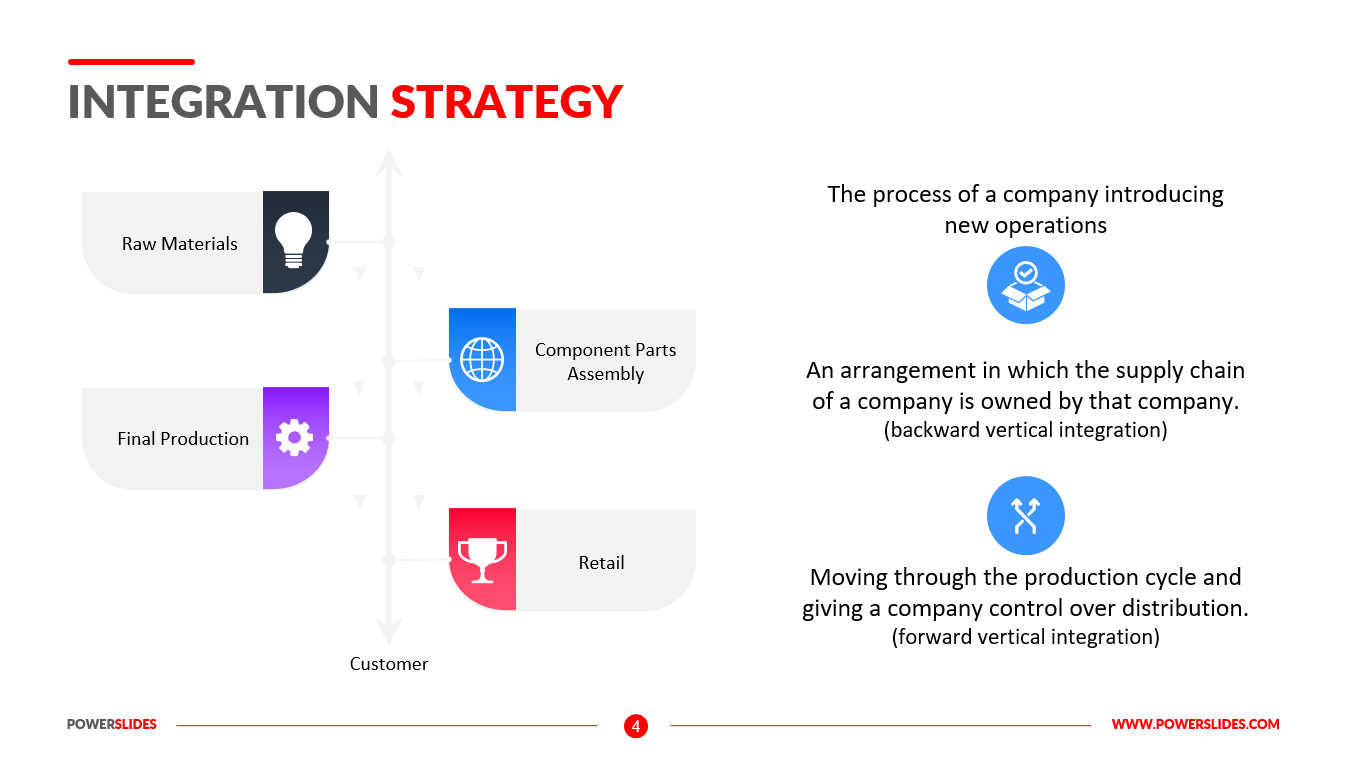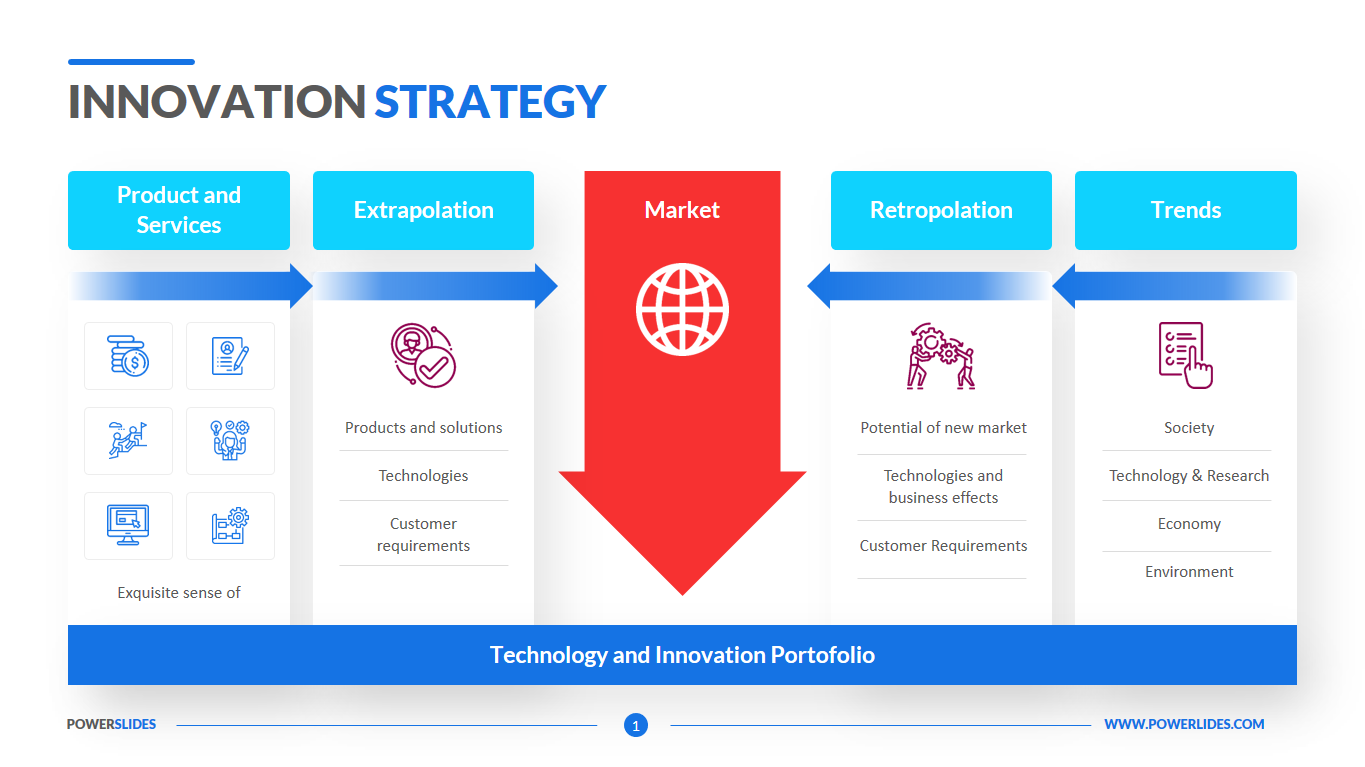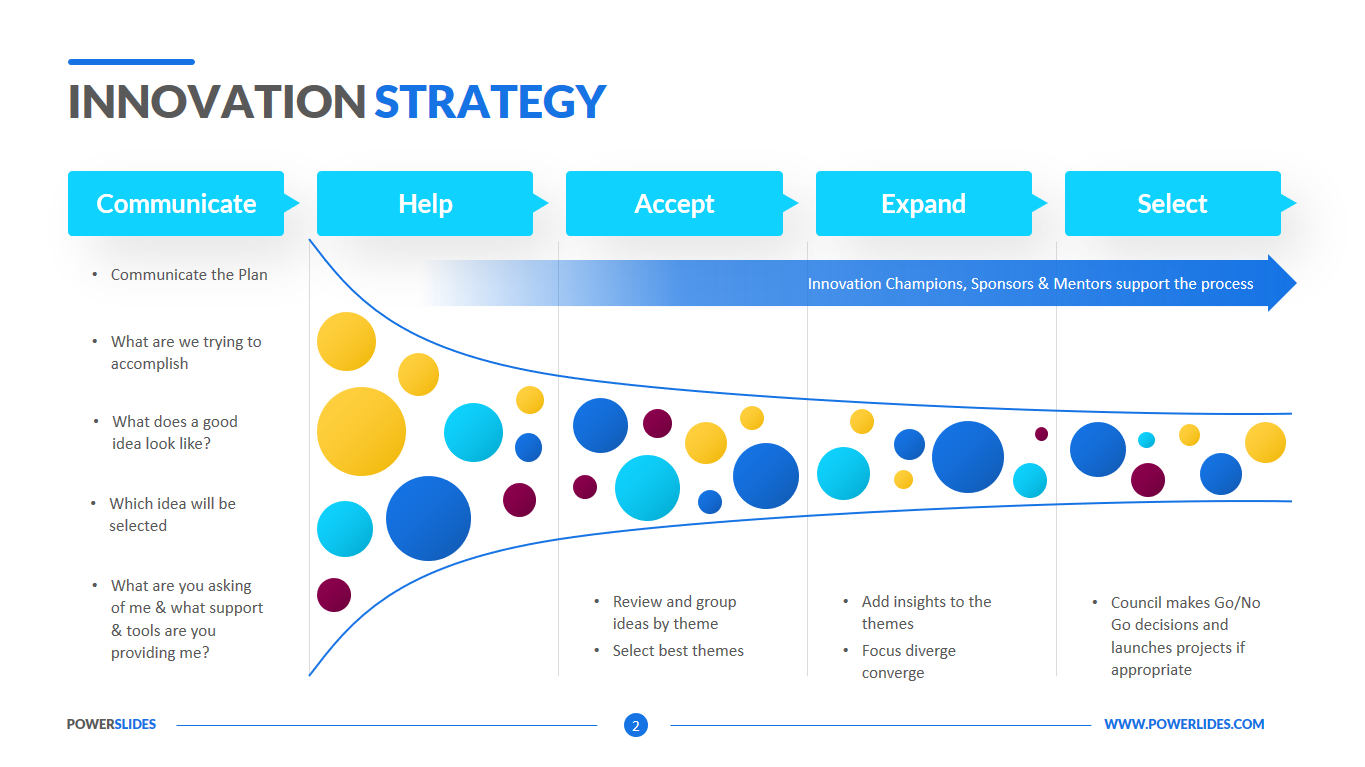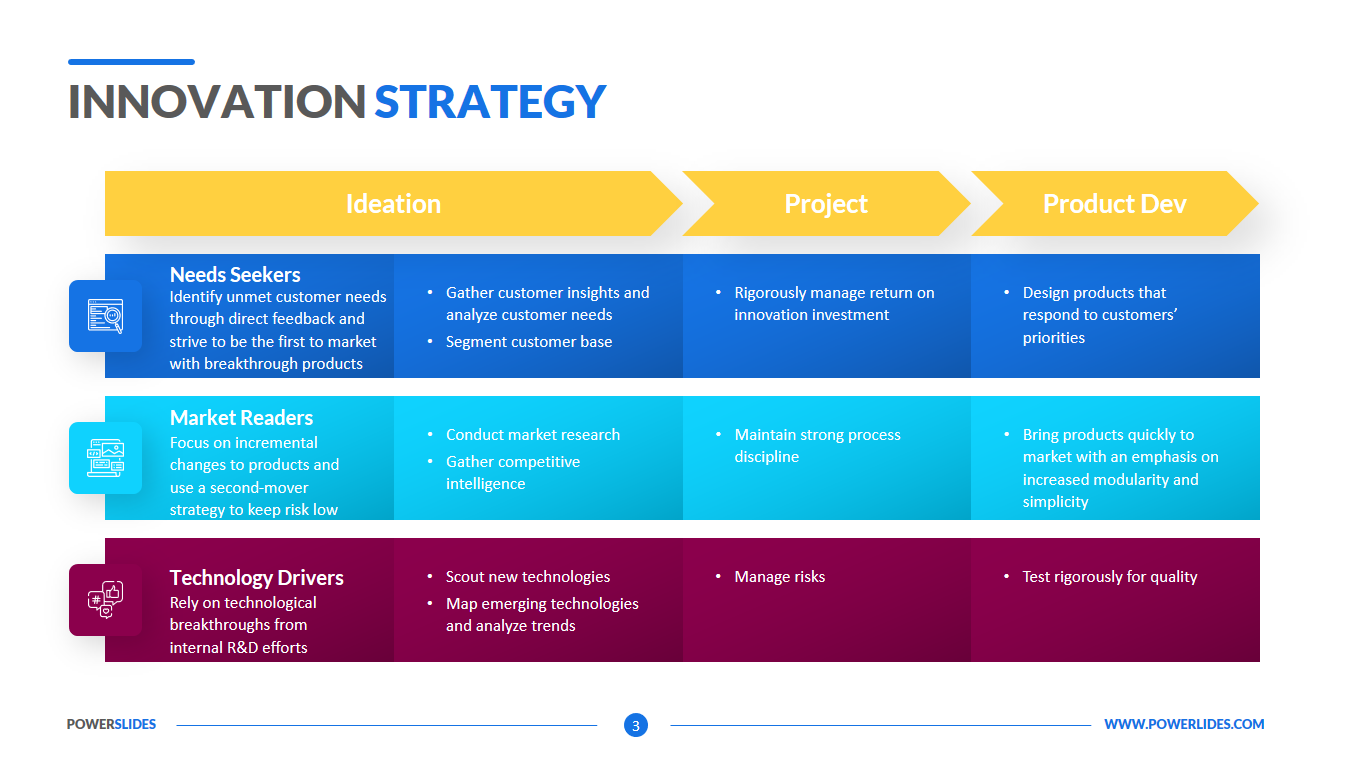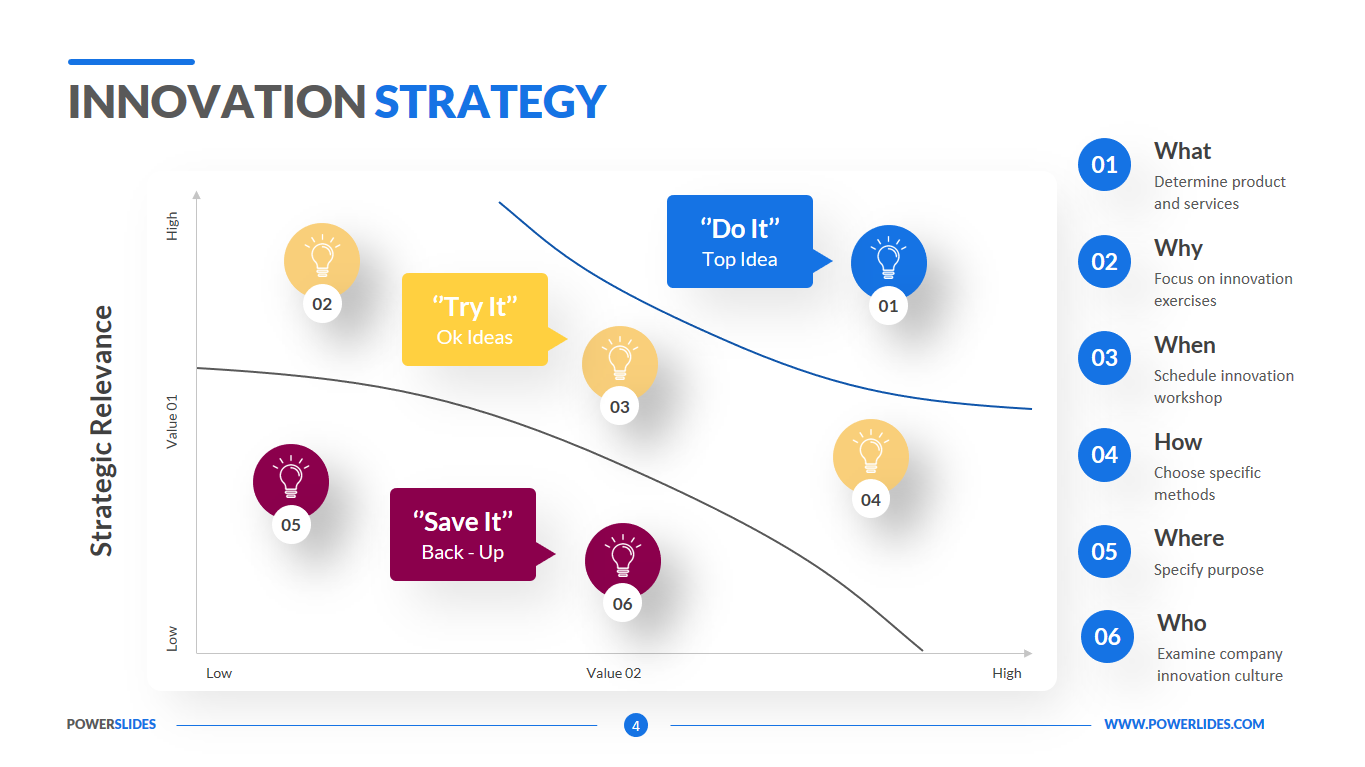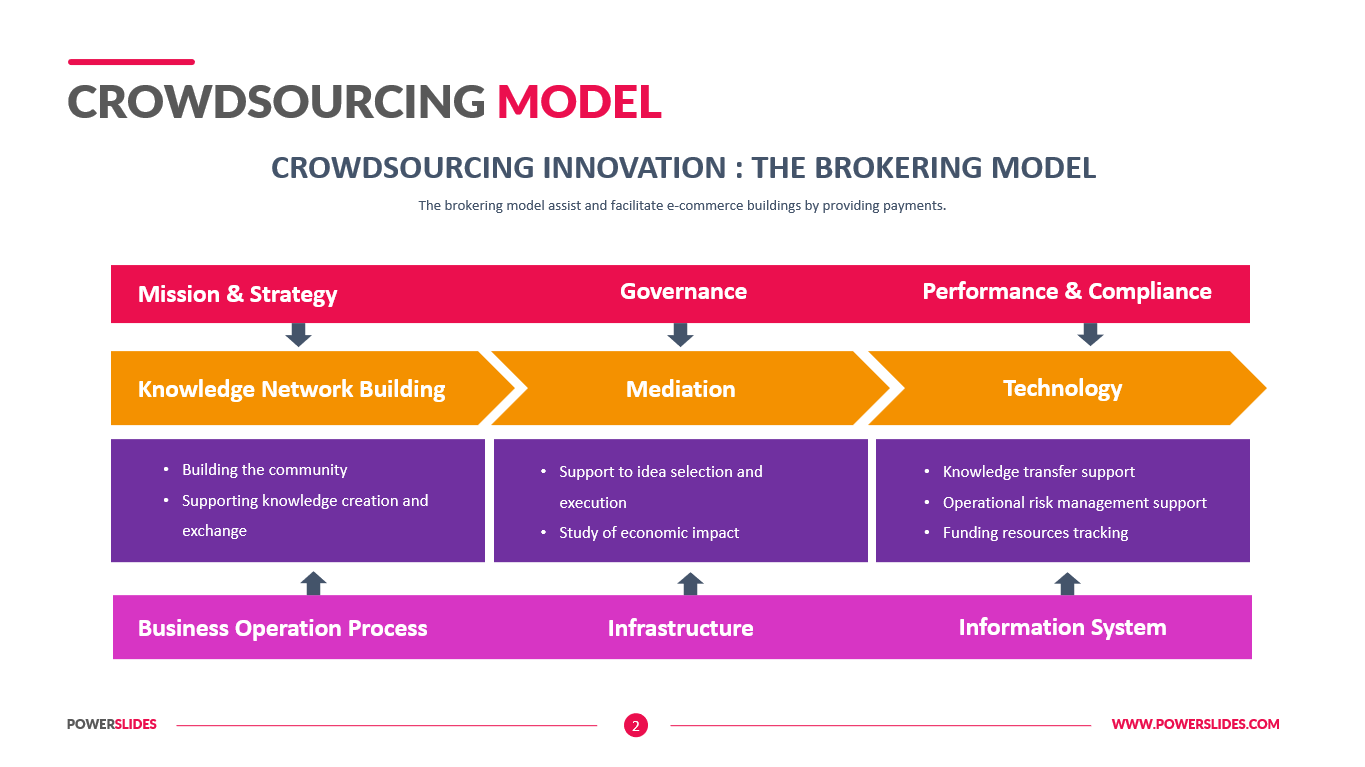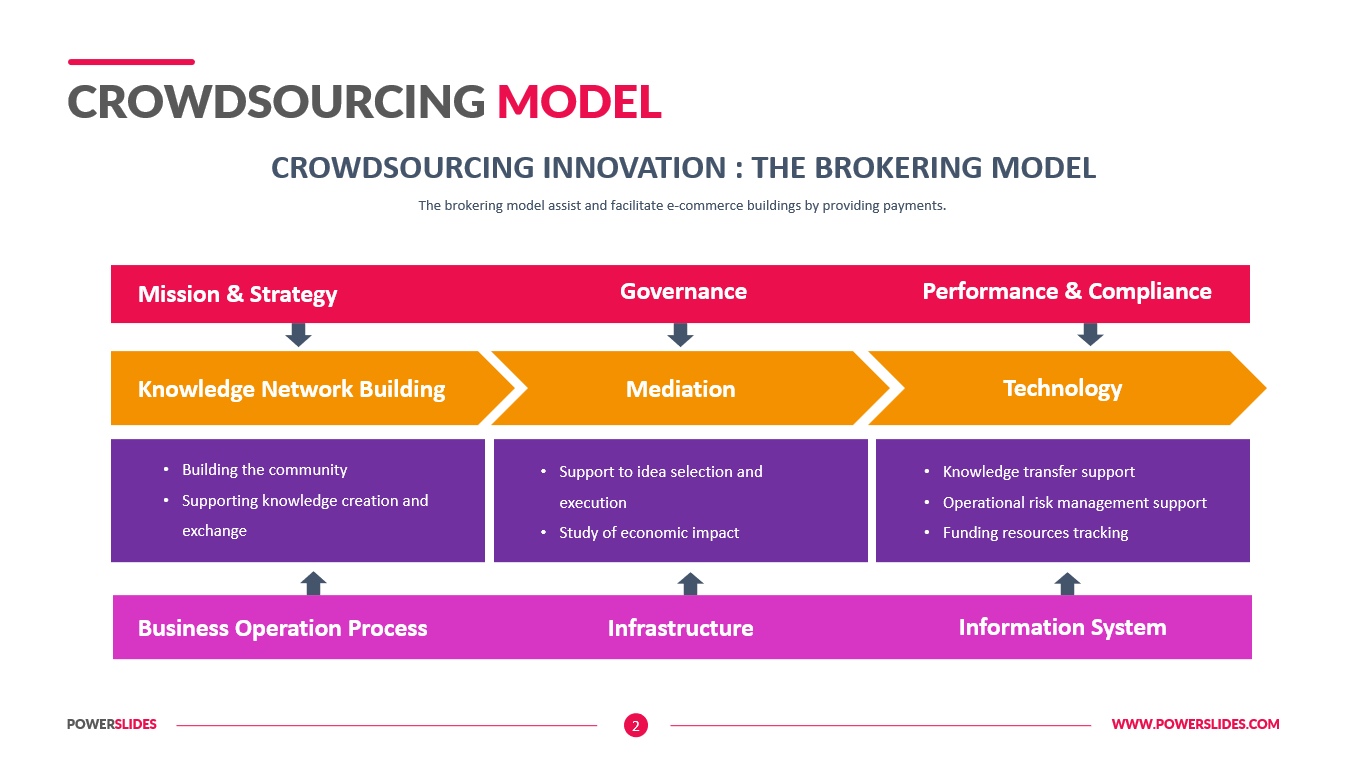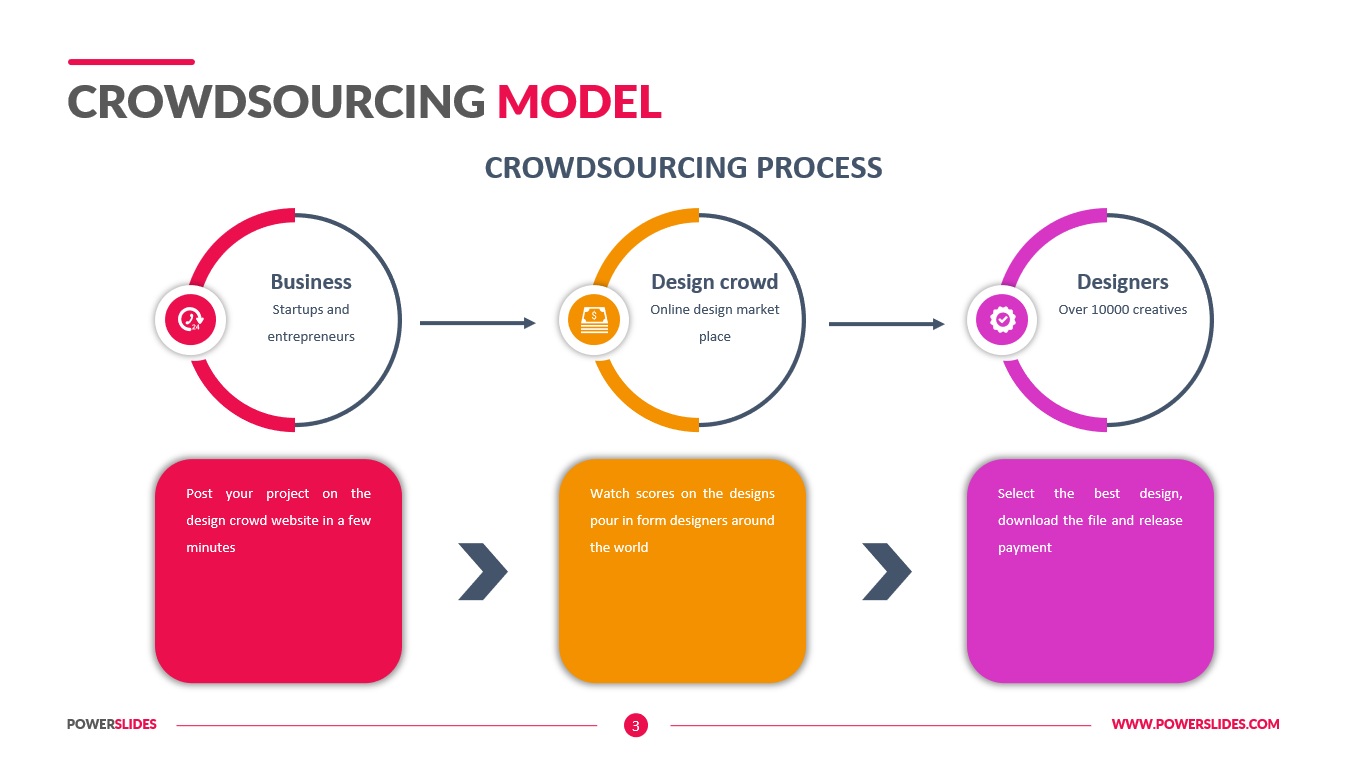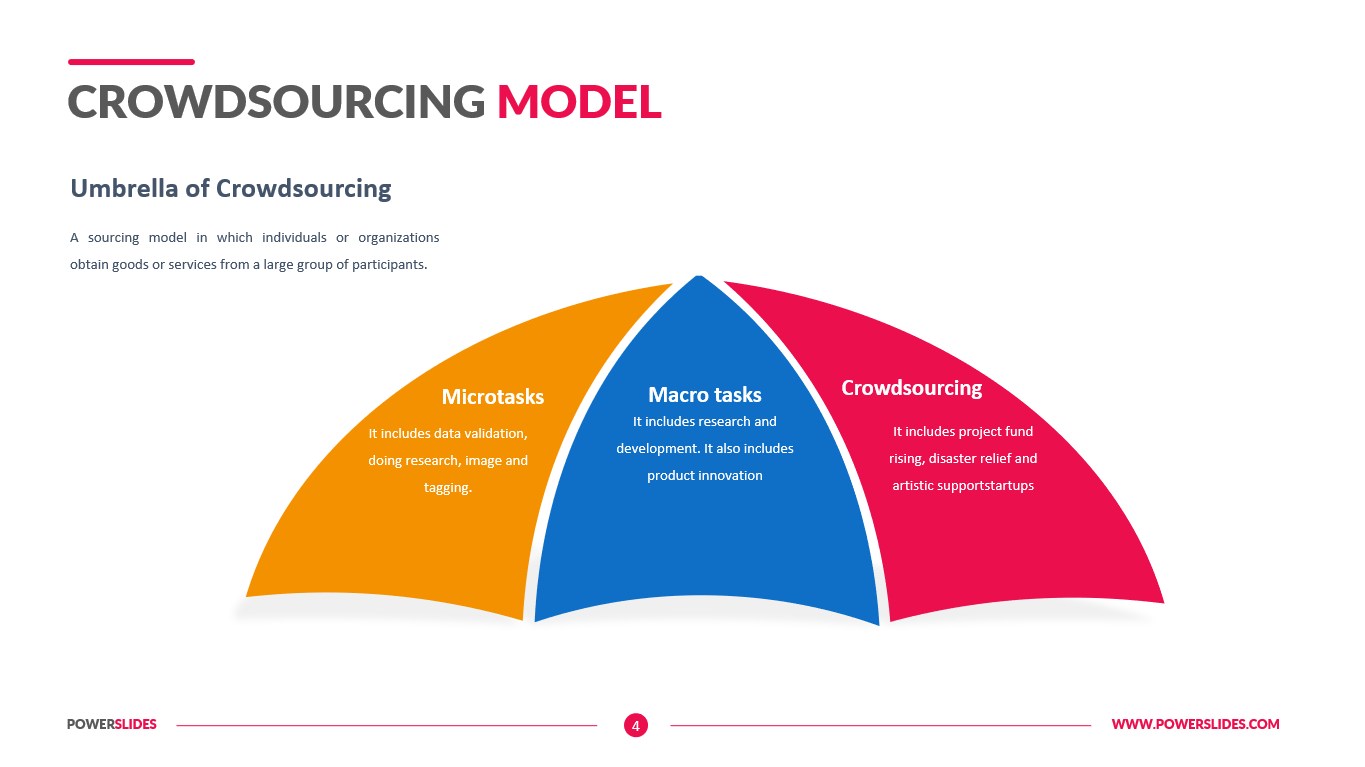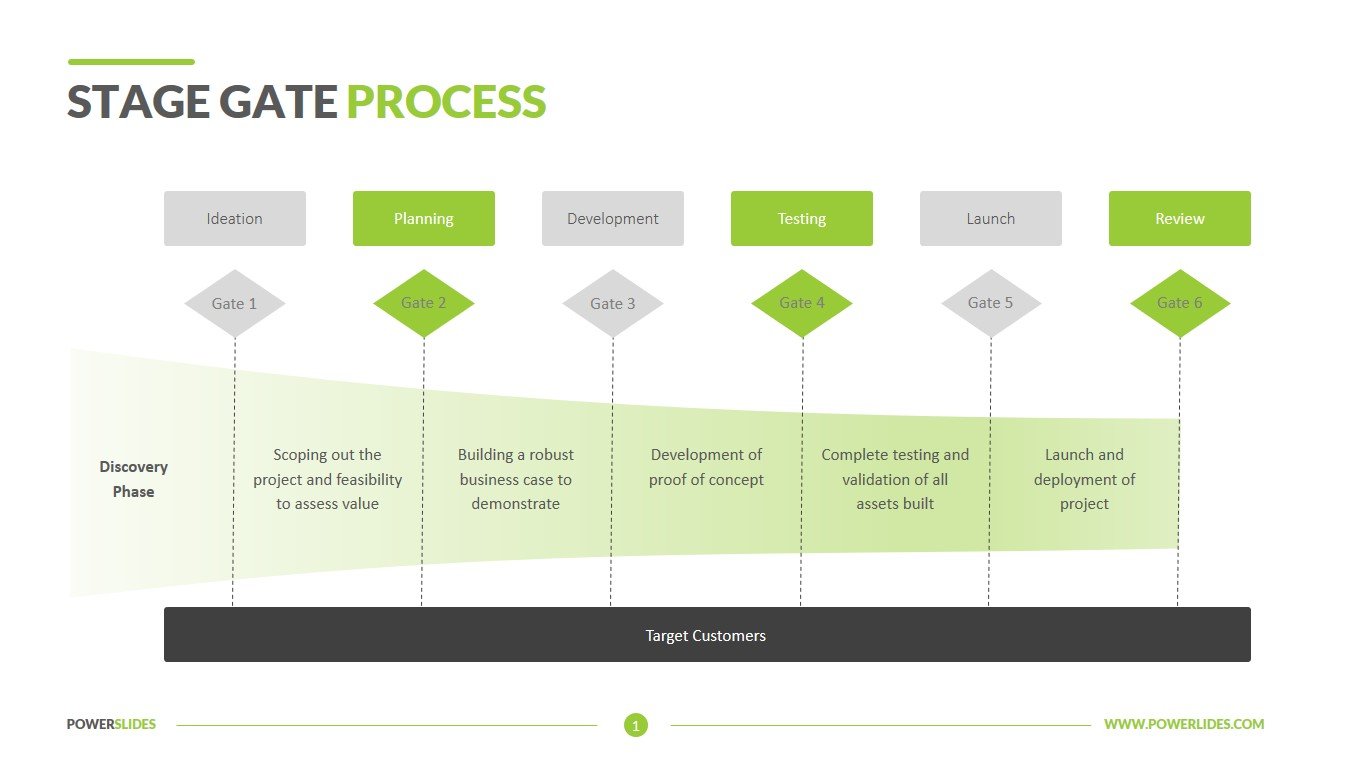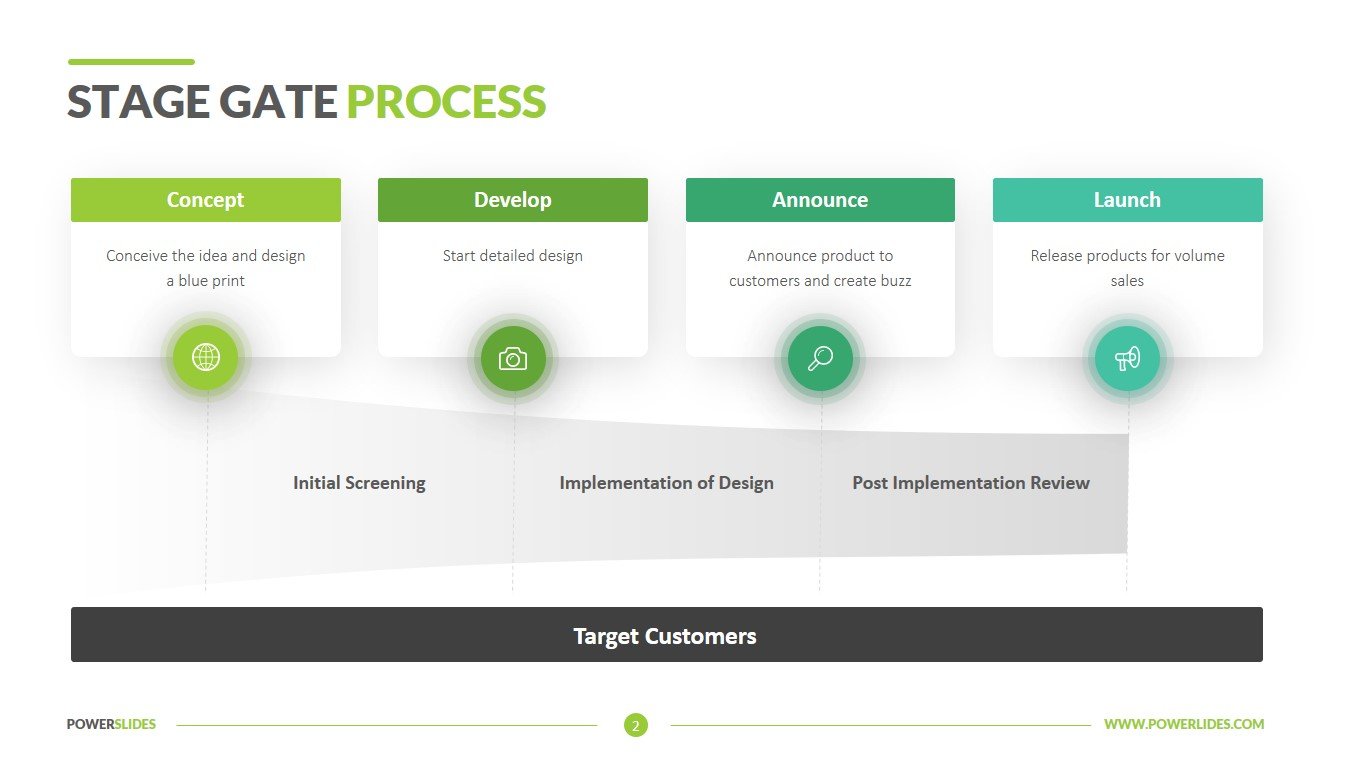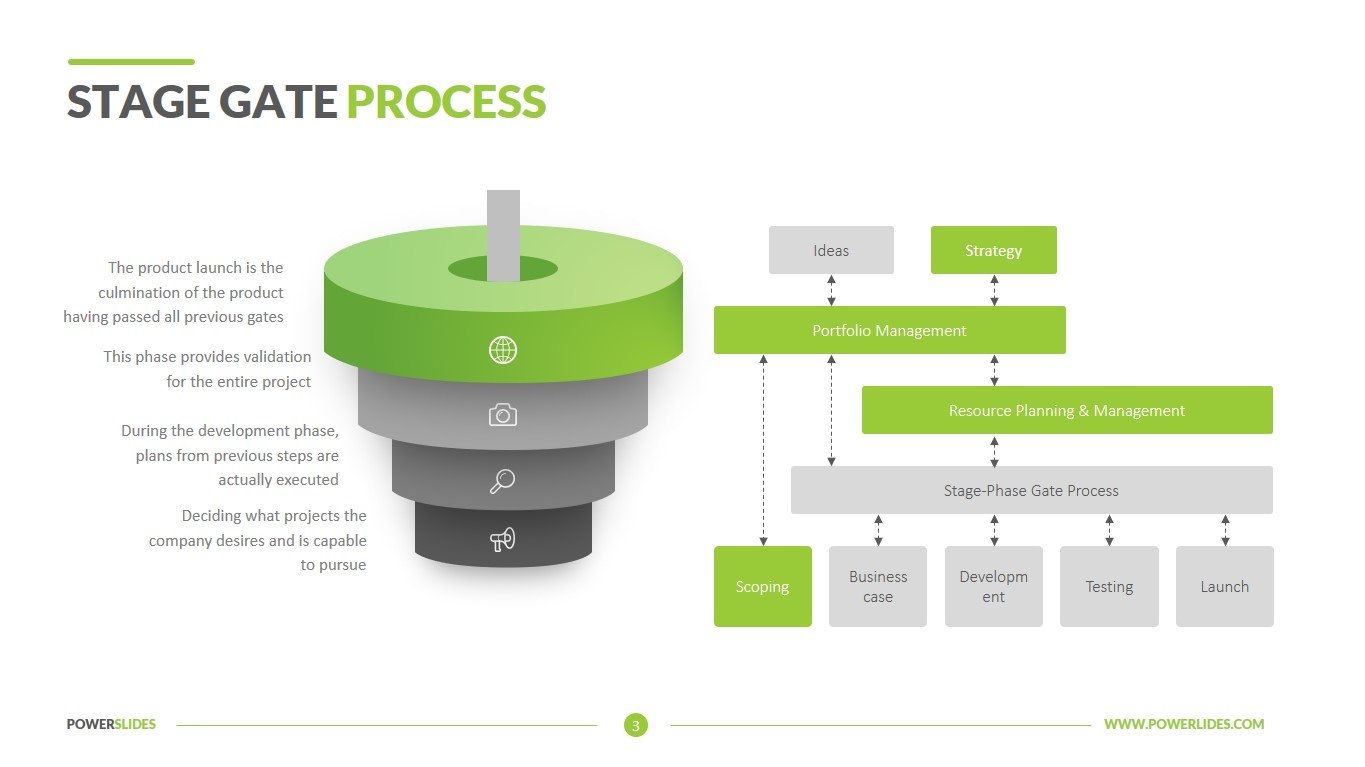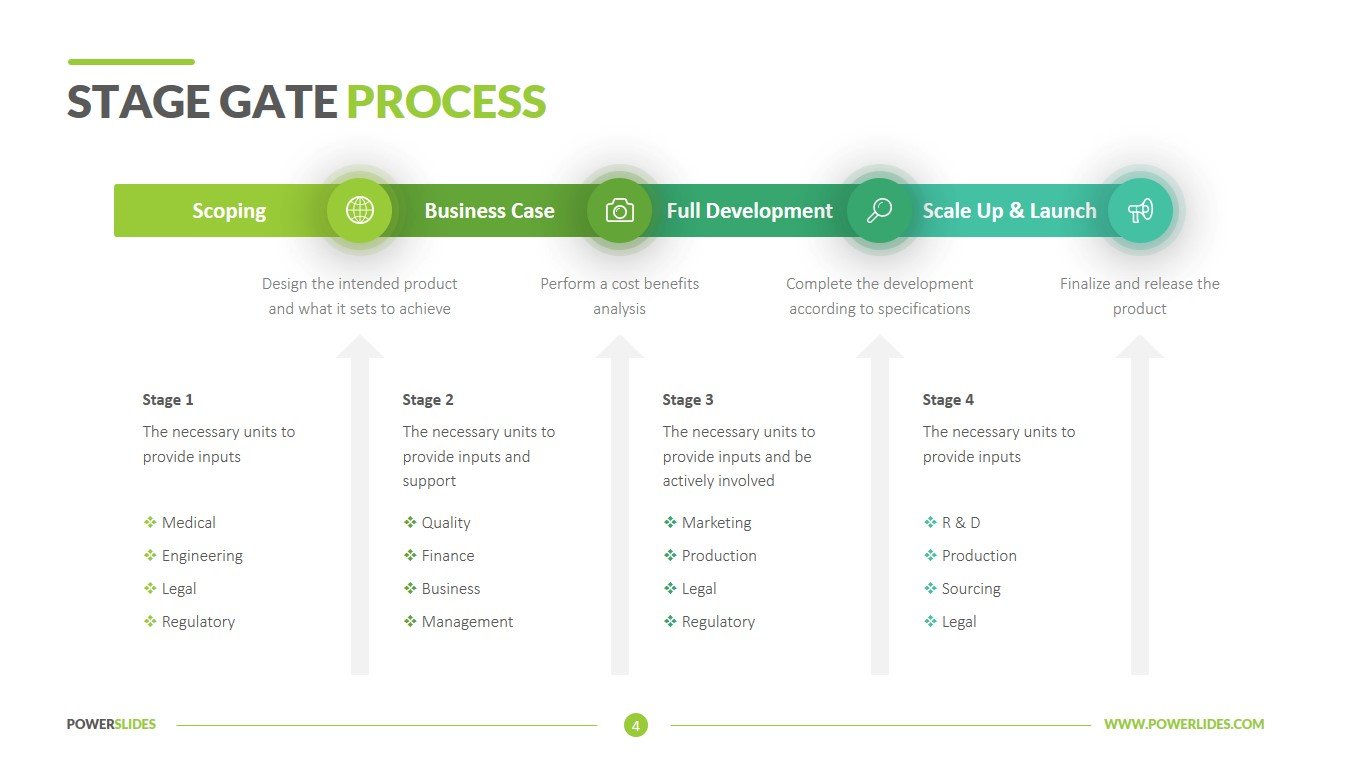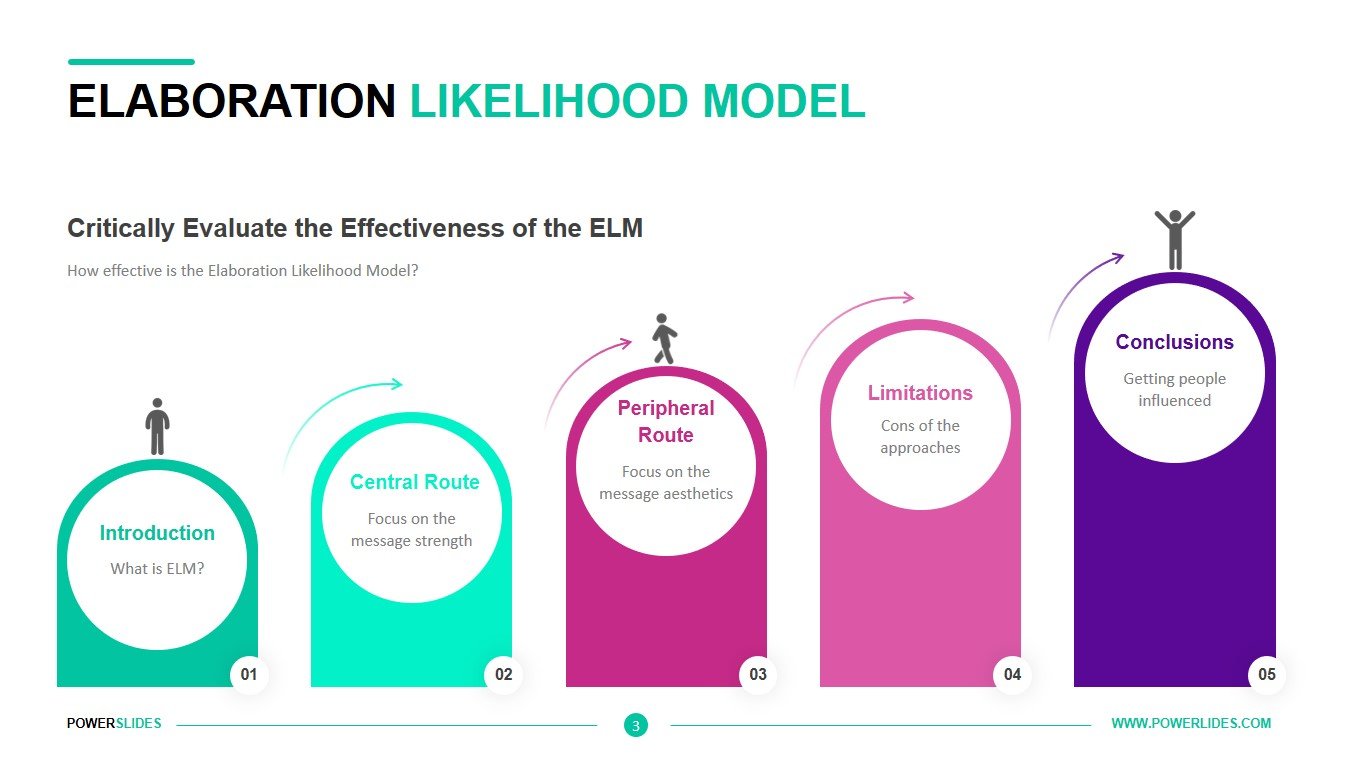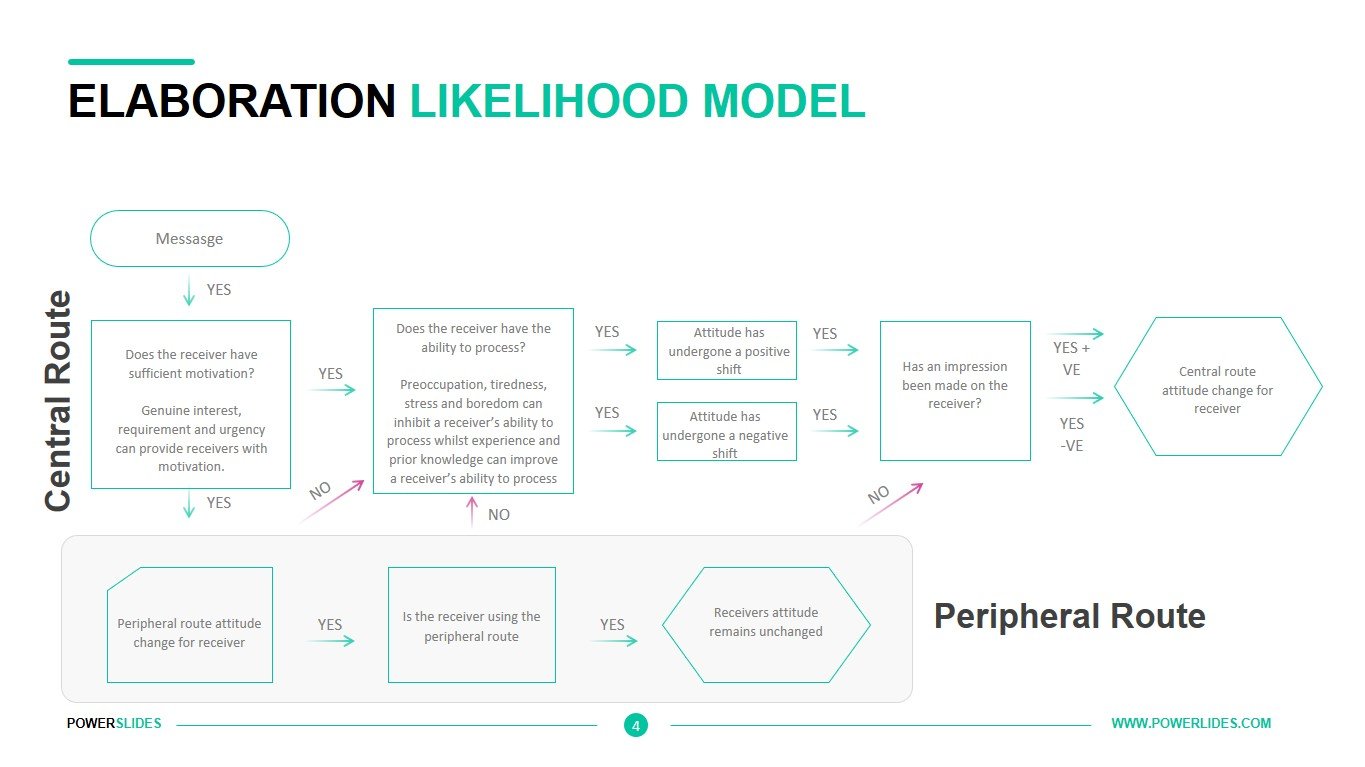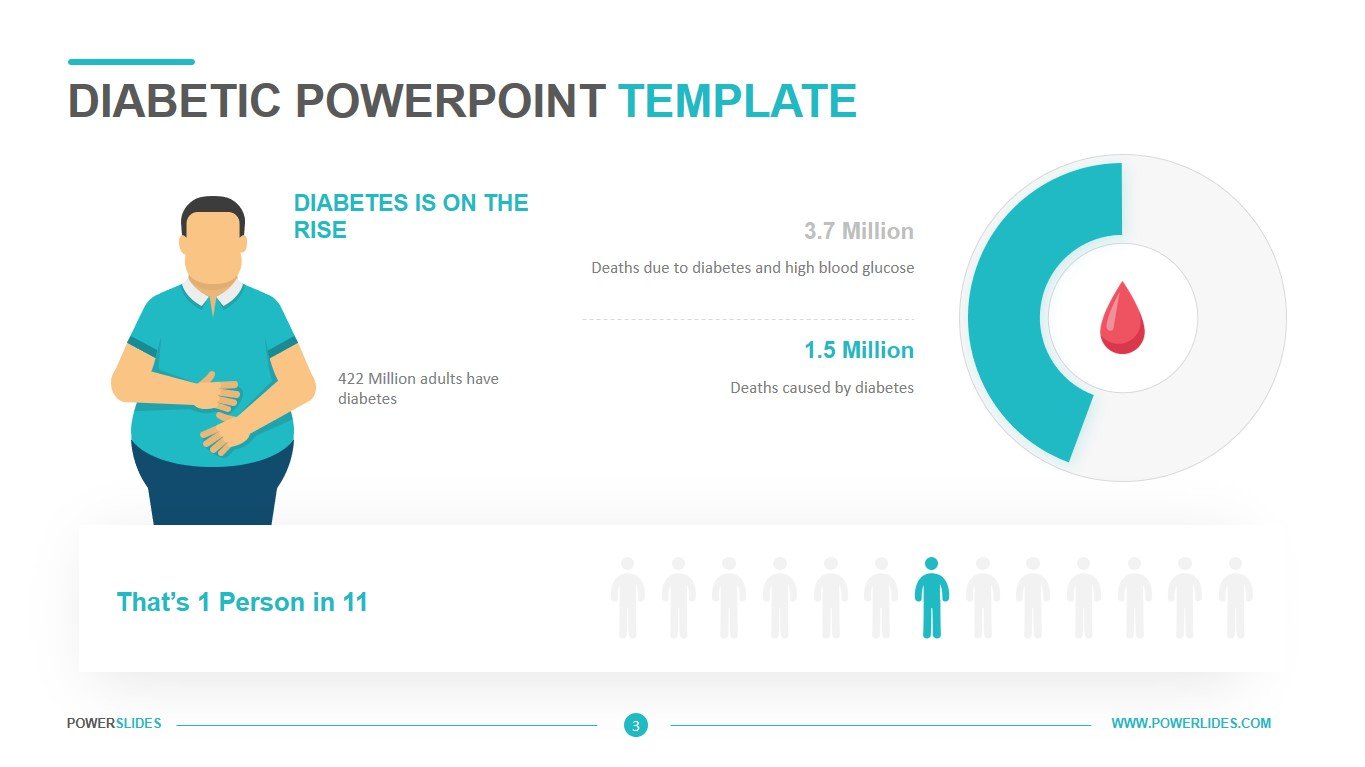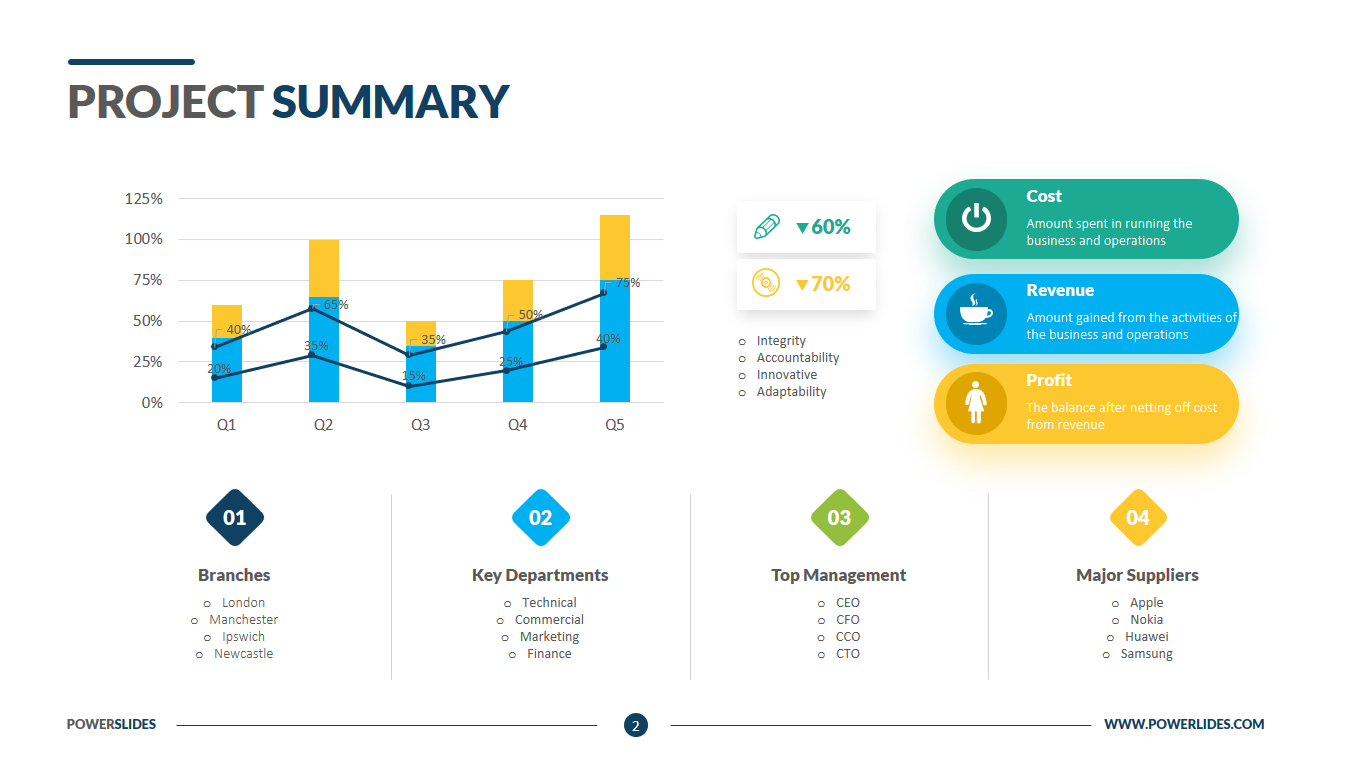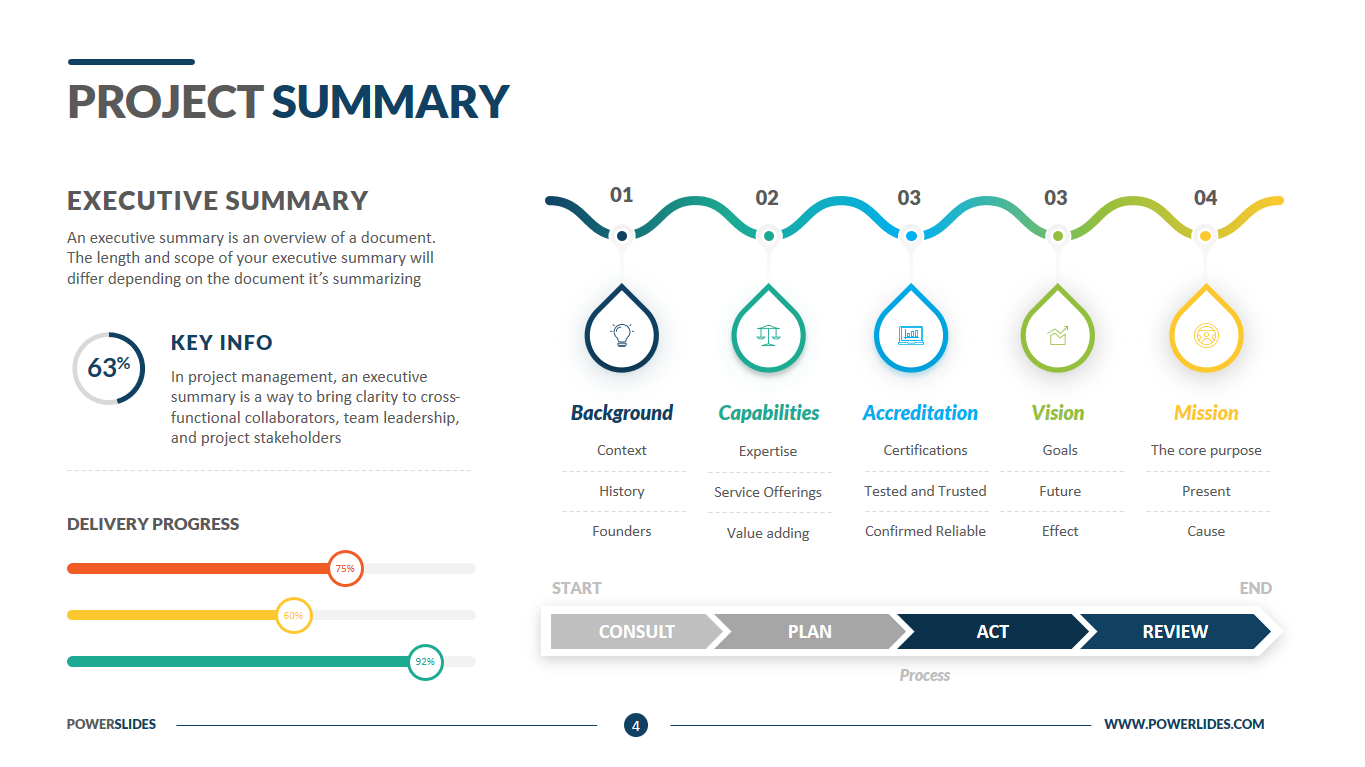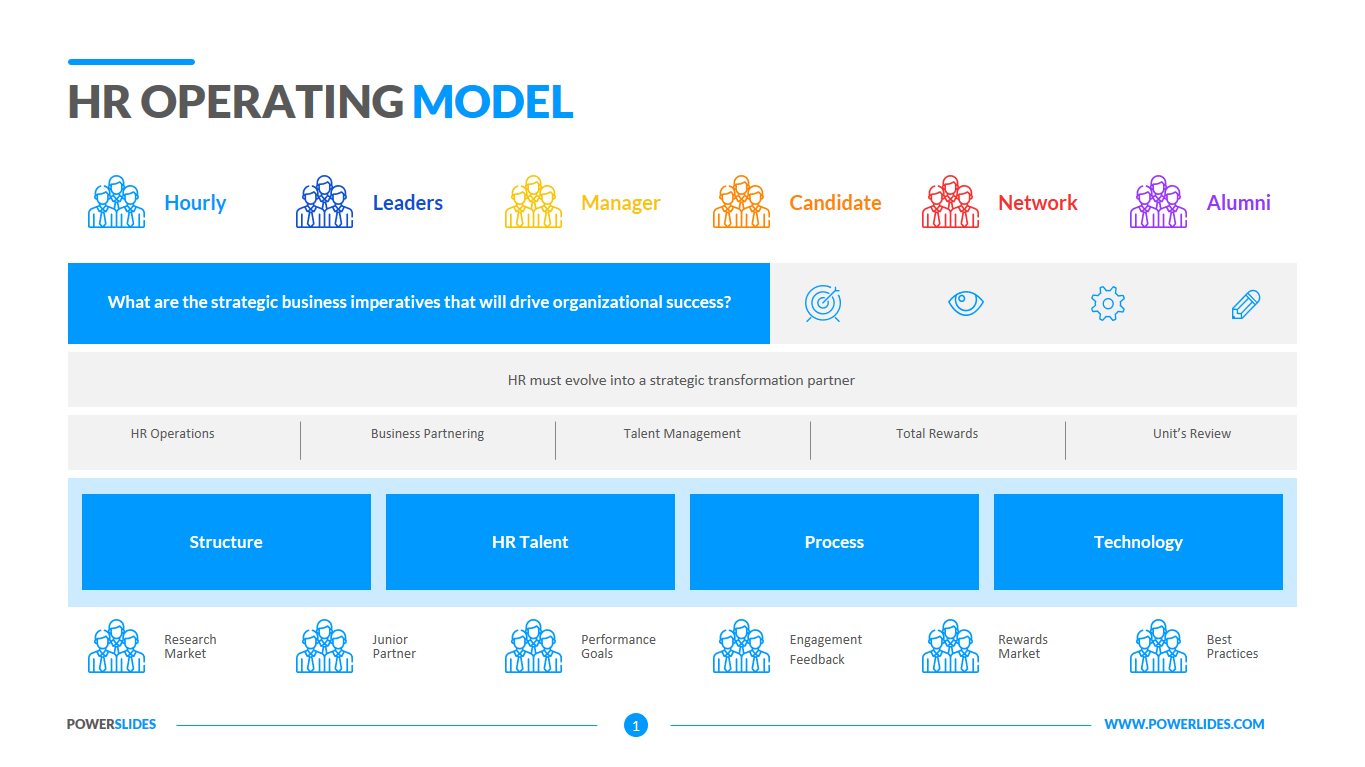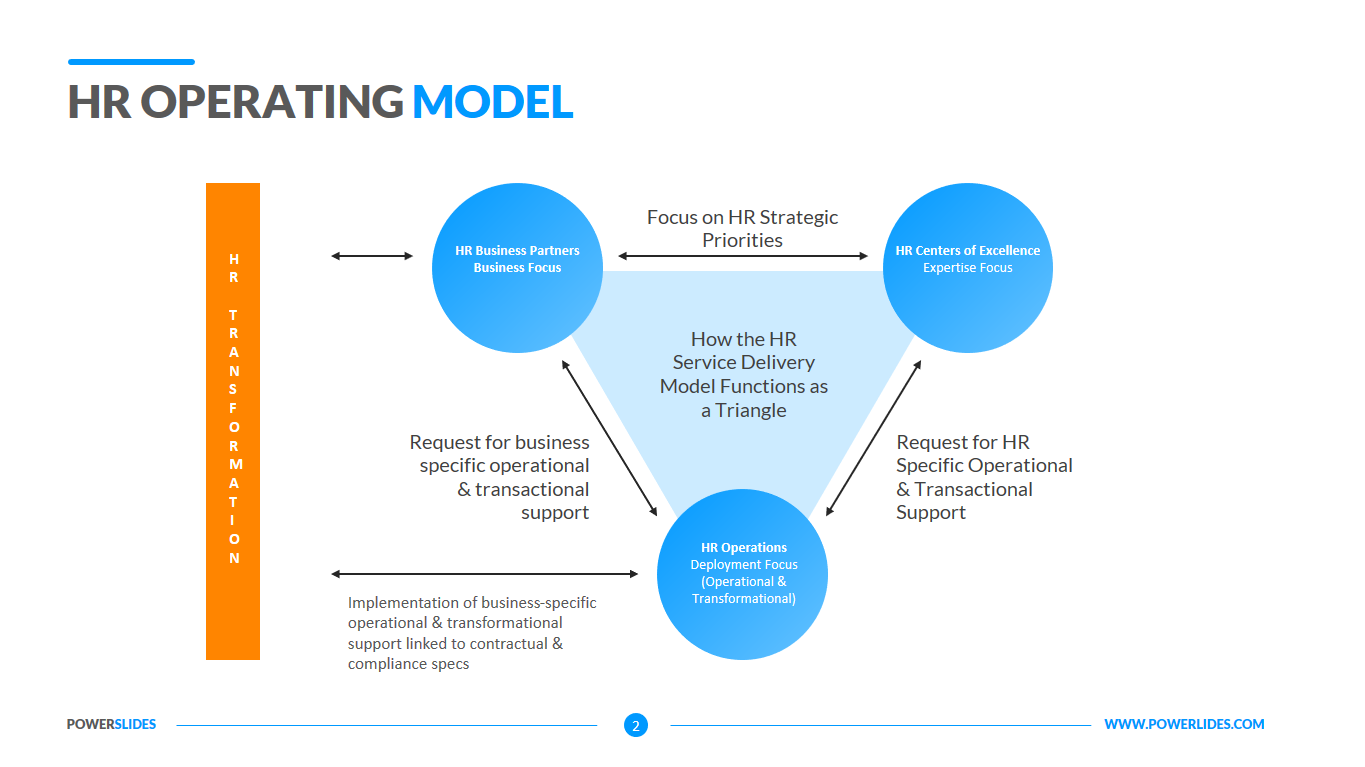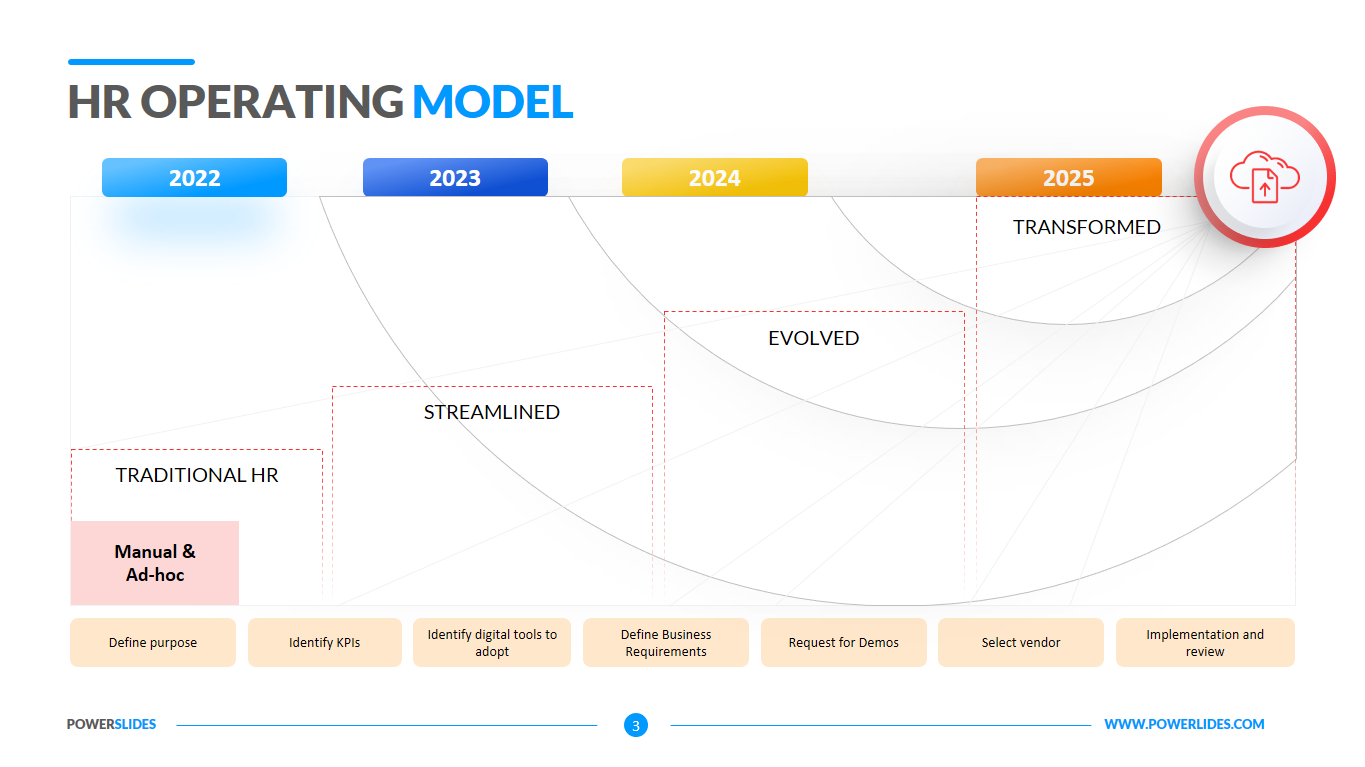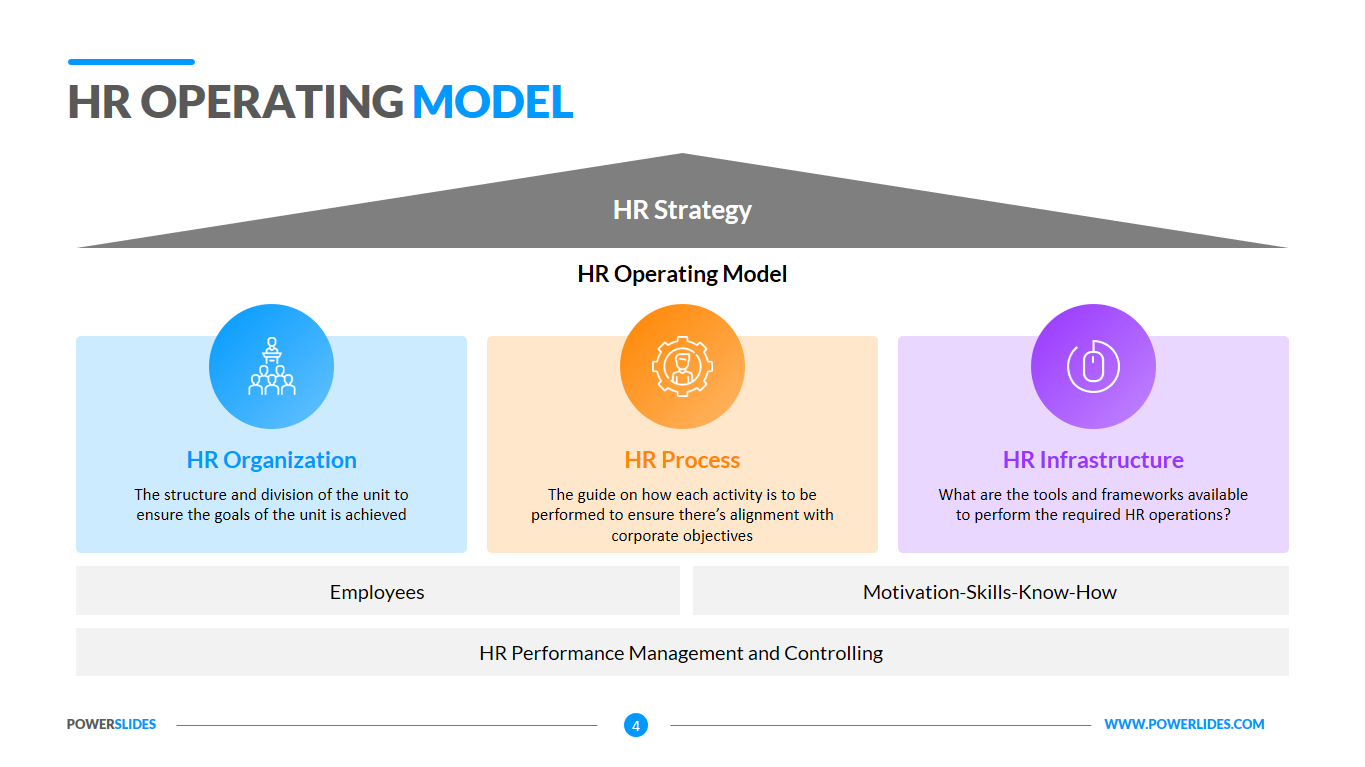Bowman Strategy Clock
 4 Slides
4 Slides
 File size: 16:9
File size: 16:9 
 Fonts: Lato, Calibri
Fonts: Lato, Calibri
 Supported version
PPT 2010, PPT 2013, PPT 2016
Supported version
PPT 2010, PPT 2013, PPT 2016
Product details
Analyze the competitive position of your company in comparison to the offering of competitors and stay ahead of the competition. Bowman’s Strategy Clock model is generally used in marketing to categorize and describe the competitive position of a company or organization in comparison to its competitors. Developed by Cliff Bowman as an elaboration of the three porter generic strategies, he considers competitive advantages related to cost advantage and differentiation. The strategy developed by Bowman contains eight strategies that can be mapped across Cartesian axes where the horizontal axis represents price and the vertical axis represent the perceived value.
The eight possible positions on the clock are described below, starting at the 12:00 and rotating clockwise around the face. Position 1. Low price and low added value: Products in this position are not differentiated and are not perceived as having high value. It is not the most competitive position on the Clock. Position 2. Low price: In this position, products are mass-produced and have good value. The profit margin is low but is made up for by the high production volume and generally profits are high. Position 3. Hybrid: This position on the clock is usually very effective, because the products in this position are differentiated and low priced. Position 4. Differentiation: In this position, companies offer high quality at an average price, which results in a high degree of perceived value. Position 5. Focused Differentiation: Luxury and exclusive brands focus on this clock position, as it is where high quality meets a high price. Position 6. Risky high margins: Products in this segment are priced high and the customer’s perceived value is just mediocre. Position 7. Monopoly Pricing: In this position, companies have the advantage of being the only contenders offering the product. Position 8. Loss of market share: In this position, a company is not able to offer a valuable product to the customer, and the customer will not purchase. Prices are too high and market share is lost.
The first slides present the Bowman clock on a Cartesian graph where the vertical axis is the price and the horizontal axis is the perceived value of your company. Subsequent slides illustrate the Bowman strategy with descriptive infographics to engage your audience. This template is designed in a cool color scheme and has all the tools you need to build a professional presentation. You can independently edit all the elements of this template according to your corporate needs. It provides adequate placeholders for users to adapt the diagram to their analysis. This template will primarily be useful for marketers. You can use this template when preparing an analysis of existing products and understanding the potential market size of your company. Product managers can also use this template when preparing a new product-to-market strategy. Sales managers can use this template when discussing sales strategy in different regions using different promotion strategies. Also, this template will be useful for a startup when preparing to meet with potential investors. You can describe a niche for your future product using the slides of this template. Business trainers can use the slides of this template when preparing a marketing training course or a new product-to-market course. The Bowman Strategy Clock template can be used with other slides in your marketing presentations. This template will be a worthy addition to your collection of professional presentations.






